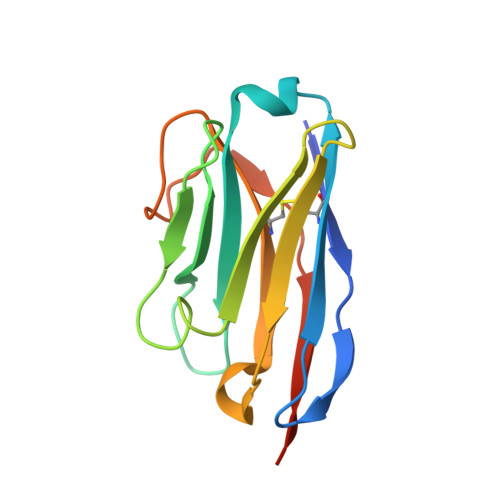Camelid nanobodies used as crystallization chaperones for different constructs of PorM, a component of the type IX secretion system from Porphyromonas gingivalis.
Duhoo, Y., Roche, J., Trinh, T.T.N., Desmyter, A., Gaubert, A., Kellenberger, C., Cambillau, C., Roussel, A., Leone, P.(2017) Acta Crystallogr F Struct Biol Commun 73: 286-293
- PubMed: 28471361
- DOI: https://doi.org/10.1107/S2053230X17005969
- Primary Citation of Related Structures:
5FWO, 5LMJ, 5LMW, 5LZ0 - PubMed Abstract:
PorM is a membrane protein that is involved in the assembly of the type IX secretion system (T9SS) in Porphyromonas gingivalis, a major bacterial pathogen that is responsible for periodontal disease in humans. In the context of structural studies of PorM to better understand T9SS assembly, four camelid nanobodies were selected, produced and purified, and their specific interaction with the N-terminal or C-terminal part of the periplasmic domain of PorM was investigated. Diffracting crystals were also obtained, and the structures of the four nanobodies were solved by molecular replacement. Furthermore, two nanobodies were used as crystallization chaperones and turned out to be valuable tools in the structure-determination process of the periplasmic domain of PorM.
Organizational Affiliation:
Centre National de la Recherche Scientifique, Architecture et Fonction des Macromolécules Biologiques, UMR 7257, Marseille, France.















